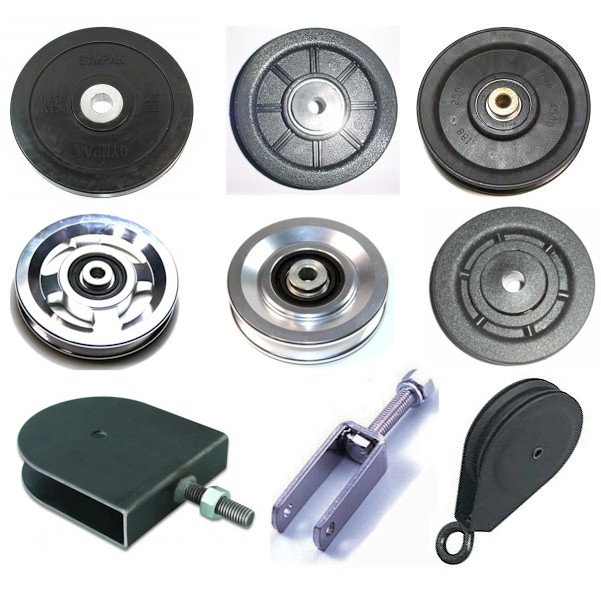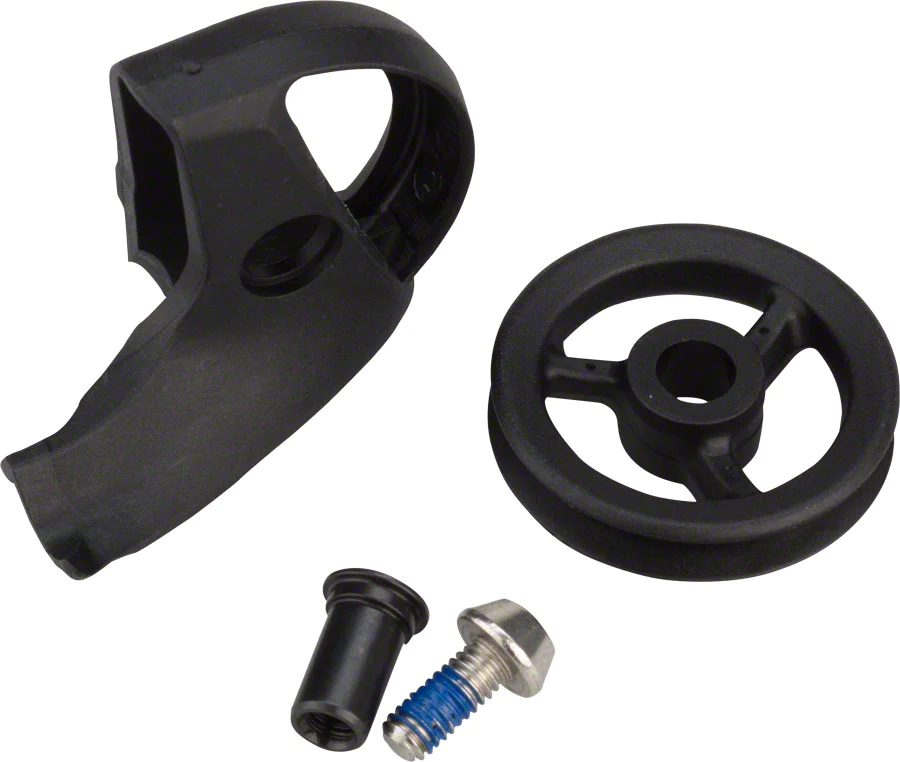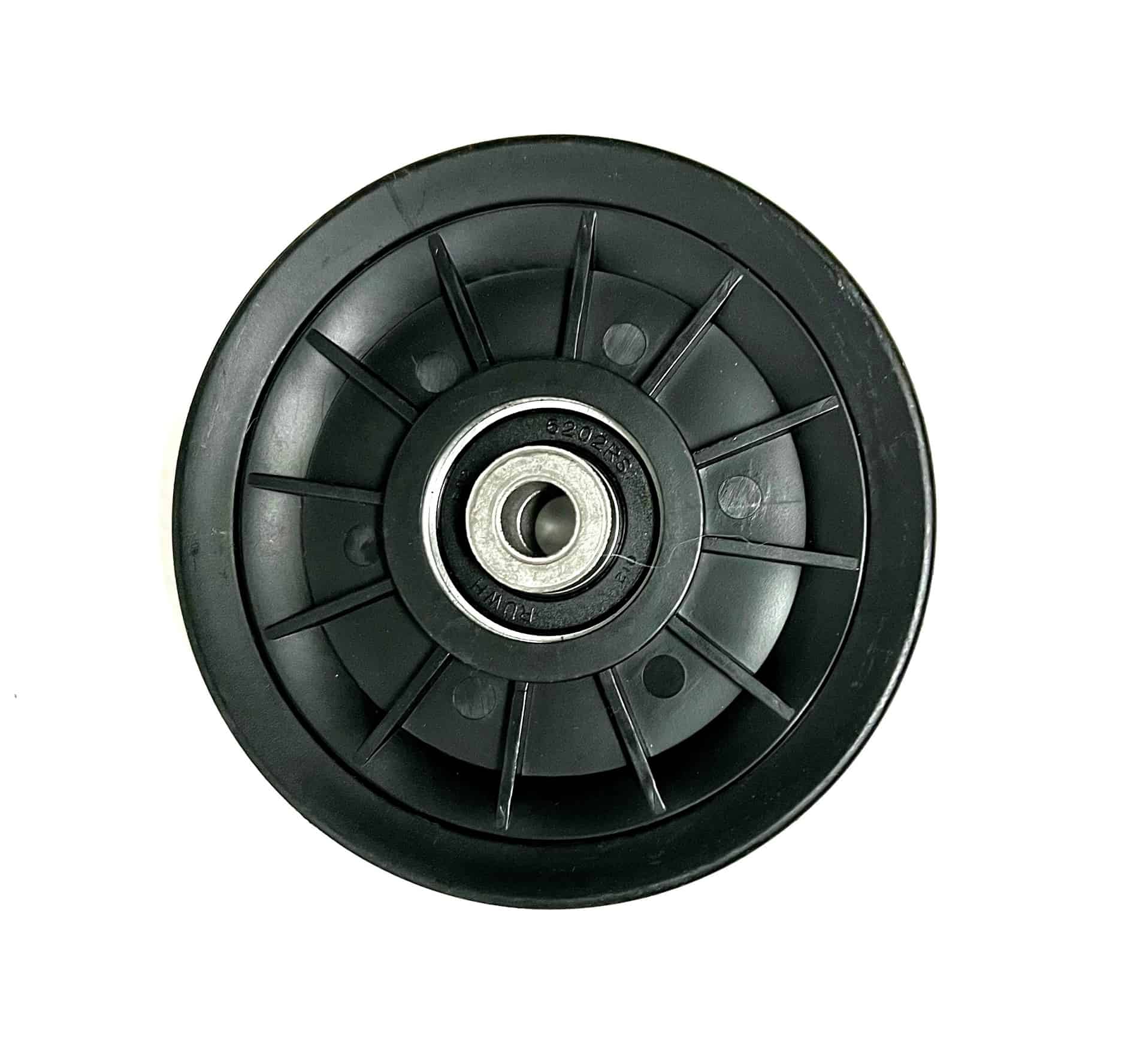Product Description
Triple Drum Corner Cable Roller Electrical Power String Pulley Wheel Rope Cable Pulley Stringing Tools
Our Triple Drum Corner Cable Roller is designed with 3 rollers. In accordance with the requirement, multiple assembly sets can be combined together to form arbitrary turning angle. The model with 'N' represents nylon roller.
Product Specification
|
Item Number |
Model |
Rated Load (kN) |
Diameter of Applicable |
Weight (kg) |
|
21221 |
SHL2 |
10 |
≤Φ150 |
12 |
|
21222 |
SHL2N |
10 |
≤Φ150 |
10 |
|
21223 |
SHL3 |
10 |
≤Φ120 |
11 |
|
21224 |
SHL3N |
10 |
≤Φ120 |
9 |
|
21224A |
SHL4N |
10 |
≤Φ200 |
26 |
To support the Transmission work, CHINAMFG Power has Tubular Gin Pole, Hydraulic cable puller, wire rope pulley block, hoisting tackle, Wire rope gripper, Cable reel spool and stand- all are OEM and professionally produced per ISO 9001:2008, which are being sold to over more than 50 countries in the world. Some items like emergency restoration tower and crossing structure, we can customized, and the safety tools and accessories, are not demanded the MOQ. You can freely help you out either Tech issue or Products requirements. Pls approach us. Thanks.
1. Training and services.
CHINAMFG is a company specializing in the development, design and manufacture of electrical construction equipment and tools. We not only manufacture and sell international standard products, OEM and custom products, but also provide quality tracking and service monitoring.
2. How about the quality of your products?
Our products are manufactured in strict accordance with national and international standards, and each product is tested before delivery. If you would like to view our quality certification and various test reports, please consult us.
3. Why do you choose us?
Because we can provide you with excellent service, quality and reasonable price. In addition, we can also provide smooth delivery of goods, excellent customer solutions.
4. Customer inquiry.
If there is an emergency, customers can also use online contact methods (online Chat, Skype, WhatsApp, ) for faster and better communication. Any enquiry will be answered within 12 working hours.
5. How to obtain samples?
We can provide free samples to the buyer for testing, but the buyer needs to pay the freight. Existing samples take 2-3 days. If there is no stock, we will advise the delivery date.
6. How about packing and shipping?
All goods will be packed in plywood boxes for safe, long haul transport. Support EXW, FOB, CIF, CFR terms.
Required documents such as packing list, commercial invoice, bill of lading, air waybill, CO, Form E, Form F etc will be provided.
Note: If you do not find the product you need, please feel free to contact us. We will provide the best quotation as soon as we verify your requirements.
/* January 22, 2571 19:08:37 */!function(){function s(e,r){var a,o={};try{e&&e.split(",").forEach(function(e,t){e&&(a=e.match(/(.*?):(.*)$/))&&1
| Type: | Cable Reel |
|---|---|
| Certification: | CE, CCC, ISO |
| Customized: | Customized |
| Condition: | New |
| Feature: | Fire/Flame Retardant |
| Manufacturing Process: | Casting |

What role do cable pulleys play in stage and theater rigging systems?
In stage and theater rigging systems, cable pulleys play a crucial role in achieving safe and efficient movement and positioning of stage elements such as scenery, lighting, and curtains. They are an integral part of the rigging infrastructure, providing support, control, and guidance for the cables used in these systems. Cable pulleys contribute to the overall functionality and precision of stage and theater rigging operations. Here is a detailed explanation of the role cable pulleys play in stage and theater rigging systems:
- Lifting and Lowering: Cable pulleys are used to lift and lower various stage elements, including scenery pieces, lighting fixtures, and curtains. The cables are attached to these elements and routed through the pulleys. By raising or lowering the cables, the stage elements can be moved to the desired height or position. The cable pulleys guide and support the cables, ensuring smooth and controlled movement. They contribute to the precision and efficiency of lifting and lowering operations in stage and theater rigging systems.
- Line Set Systems: Stage and theater rigging often employ line set systems, which consist of multiple cables and pulleys organized into sets. Each line set is used to control the movement of specific stage elements. Cable pulleys play a crucial role in line set systems by guiding and supporting the cables in their designated paths. The pulleys help distribute the load evenly across the cables and ensure synchronized movement of the line set. This allows for coordinated and precise positioning of stage elements.
- Counterweight Systems: Many stage and theater rigging systems utilize counterweight systems to facilitate the lifting and lowering of stage elements. In these systems, counterweights are attached to the opposite end of the cables from the load. Cable pulleys guide the cables and counterweights, ensuring smooth and balanced operation. The pulleys help distribute the weight and tension of the counterweights, contributing to the overall stability and control of the system. Cable pulleys play a vital role in maintaining the integrity and safety of counterweight systems.
- Directional Control: Cable pulleys enable directional control of the cables in stage and theater rigging systems. By positioning the pulleys in specific configurations, the path and direction of cable movement can be determined. This allows for precise positioning, raising, or lowering of stage elements in desired locations. Cable pulleys assist in achieving smooth and controlled movement along the intended paths, enhancing the overall precision and reliability of stage and theater rigging operations.
- Load Distribution: Cable pulleys help distribute the load weight evenly across the cables in stage and theater rigging systems. This ensures that the load is properly supported and prevents excessive stress on individual cables. The pulleys guide the cables and help maintain balance and stability in the rigging system. By evenly distributing the load, cable pulleys contribute to the safe and reliable operation of stage and theater rigging systems.
- Maintenance and Safety: Regular maintenance of cable pulleys is essential for the safe and efficient operation of stage and theater rigging systems. Inspections should be conducted to check for any signs of wear, damage, or misalignment. Lubrication should be applied to the pulleys as recommended by the manufacturer to ensure smooth operation and prevent corrosion. Proper tensioning of the cables should be maintained. Any issues with the cable pulleys or cables should be addressed promptly to avoid potential safety hazards.
In summary, cable pulleys play a vital role in stage and theater rigging systems. They contribute to the lifting and lowering of stage elements, operation of line set systems, functioning of counterweight systems, directional control of cables, load distribution, and overall safety. Proper maintenance of the cable pulleys is essential for ensuring their optimal performance and safety in stage and theater rigging operations.

What advantages do cable pulleys offer for efficient load-bearing and transmission?
Cable pulleys offer several advantages for efficient load-bearing and transmission in various applications. These advantages make them a popular choice in systems where the movement and transmission of heavy loads are required. Here are the key advantages of cable pulleys in load-bearing and transmission:
- Load Distribution: Cable pulleys help distribute the weight of the load over multiple points, reducing the strain on individual components. By spreading the load across multiple pulleys, the stress on each pulley and the supporting structure is minimized. This load distribution improves the overall load-bearing capacity and ensures more efficient and reliable transmission of heavy loads.
- Increased Mechanical Advantage: Cable pulleys provide a mechanical advantage by utilizing the principle of leverage. As the load is transmitted through the cable and around the pulleys, the force applied to move the load is multiplied. This mechanical advantage allows users to move or lift heavier loads with less effort, making load-bearing and transmission more efficient and manageable.
- Directional Control: Cable pulleys offer precise directional control of the load. By changing the arrangement and position of the pulleys, the direction of the cable and the load can be easily altered. This directional control allows for efficient maneuvering of the load, guiding it along the desired path and avoiding obstacles or obstructions. It enables smooth and controlled load-bearing and transmission in various applications.
- Flexibility: Cable pulleys provide flexibility in load-bearing and transmission systems. They can be easily integrated into different configurations and layouts to accommodate specific requirements and spatial constraints. Cable and pulley systems can be designed with various attachment points and angles, allowing for customized load paths and transmission routes. This flexibility makes cable pulleys adaptable to a wide range of applications and load-bearing scenarios.
- Adjustability: Cable pulleys offer adjustability in load-bearing and transmission systems. The tension applied to the cable can be adjusted by changing the position or angle of the pulleys, allowing for precise control of the load. This adjustability is particularly useful when dealing with varying load sizes or when fine-tuning the system to achieve optimal load-bearing and transmission efficiency.
- Smooth and Silent Operation: Cable pulleys are known for their smooth and silent operation. When properly lubricated and maintained, they can provide a quiet and friction-free load-bearing and transmission system. This smooth operation minimizes wear and tear on the components, reduces noise pollution, and ensures efficient and reliable performance in applications where noise reduction is desired.
- Space Efficiency: Cable pulleys offer space-efficient load-bearing and transmission solutions. Compared to other mechanical systems, such as gears or levers, cable and pulley systems require relatively less space. The compact design of cable pulleys allows for efficient utilization of available space, making them suitable for applications where space constraints are a concern.
- Low Maintenance: Cable pulleys require minimal maintenance. With proper installation and periodic inspection, they can operate reliably for extended periods without the need for frequent adjustments or replacements. This low maintenance requirement makes cable pulley systems cost-effective and time-saving in load-bearing and transmission applications.
Overall, cable pulleys offer numerous advantages for efficient load-bearing and transmission. The ability to distribute loads, provide mechanical advantage, offer directional control, flexibility, adjustability, smooth operation, space efficiency, and low maintenance make cable pulley systems highly effective in a wide range of applications, including lifting, material handling, and power transmission.

What is a cable pulley, and how is it used in various applications?
A cable pulley, also known as a pulley wheel or sheave, is a grooved wheel that is typically used in conjunction with a cable or rope to change the direction of force and transmit motion. The cable is threaded through the groove of the pulley, allowing it to move along the circumference of the wheel. Cable pulleys are widely used in various applications where force needs to be redirected or mechanical advantage needs to be gained. Let's explore how cable pulleys are used in different industries and applications:
- Fitness and Exercise Equipment: Cable pulleys are commonly found in fitness and exercise equipment, such as weightlifting machines, cable crossover machines, and pulley systems for resistance training. They are used to guide and redirect cables, allowing users to perform exercises that target specific muscle groups. Cable pulleys provide smooth and controlled movement, enabling users to adjust resistance levels and achieve a wide range of exercises for strength training and rehabilitation.
- Mechanical and Industrial Applications: Cable pulleys play a vital role in mechanical and industrial applications where force or motion needs to be transferred, redirected, or lifted. They are used in cranes, hoists, and lifting equipment to change the direction of cables and ropes, allowing for the lifting and movement of heavy loads. Cable pulleys are also employed in conveyor systems to guide and support the movement of materials or products along production lines.
- Material Handling and Rigging: Cable pulleys are extensively used in material handling and rigging applications. They are utilized in construction sites, warehouses, and shipping yards to facilitate the movement of materials, equipment, and cargo. Cable pulleys are often incorporated into rigging systems to create mechanical advantage and enable the lifting or pulling of heavy objects with reduced effort.
- Automotive Industry: Cable pulleys are found in various automotive systems and components. They are utilized in engines for timing belt arrangements, where they help synchronize the rotation of the crankshaft and camshaft. Cable pulleys are also used in vehicle steering systems, enabling the transmission of force from the steering wheel to the steering mechanism, allowing for precise control of the vehicle's direction.
- Window and Door Systems: Cable pulleys are employed in window and door systems to enable smooth and controlled opening and closing. They are used in sliding windows and doors, allowing the cables or ropes to move along the pulley's groove, guiding the movement and ensuring proper operation of the opening mechanisms.
- Entertainment Industry: Cable pulleys are utilized in the entertainment industry for various applications. They are used in stage rigging systems to lift and move scenery, lighting fixtures, and other equipment during performances. Cable pulleys are also employed in aerial acrobatics and flying systems for performers, providing controlled movement and safety during aerial stunts.
Cable pulleys are versatile components that find application in a wide range of industries and scenarios. Whether it's fitness equipment, industrial machinery, material handling, automotive systems, window and door mechanisms, or entertainment rigging, cable pulleys play a crucial role in redirecting force, transmitting motion, and enabling smooth and controlled movement in numerous applications.


editor by CX
2024-04-08